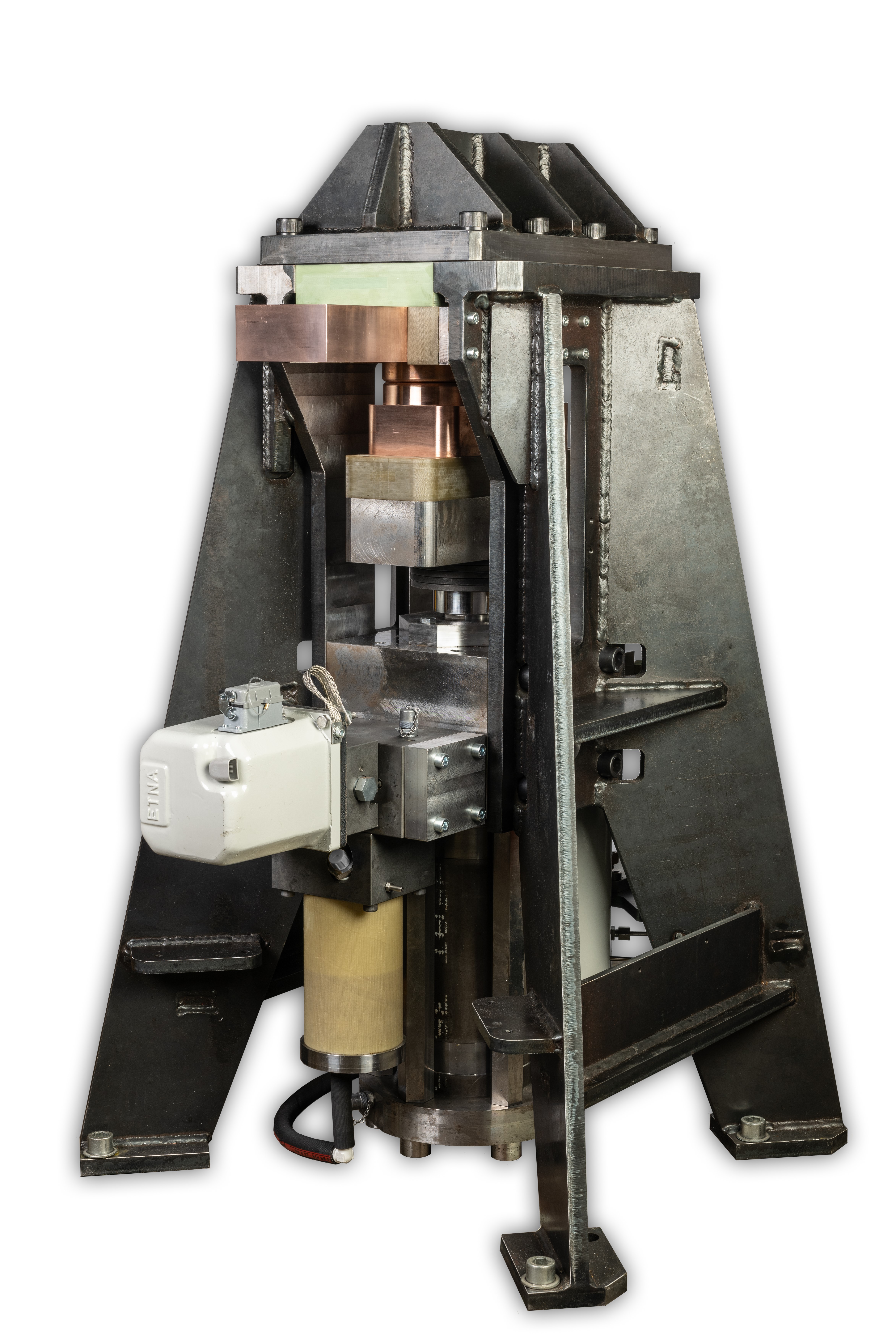Low-Voltage High-Current Make Switch (LVHC MS)
Make Switches play an essential role within power laboratories intended to test and certify electrical equipment through their ability to establish short circuits at the desired point of the electrical wave.

Until now, most of the Make Switches have been placed in the primary circuit of the facility between the generator and the transformer, with the object to be tested generally being placed downstream of the transformer. The typical Make Switch of this configuration has a rated voltage of 24kV with a making current of the order of 100 to 120 kA, depending on the general configuration of the Laboratory and the generator’s power.
This configuration leads to high costs for reading the short-circuit values. In particular, when the object to be tested is of low voltage and is located downstream of the transformer, the installation of pre-magnetization electronic elements to compensate for the “parasitic” effects of the transformer is complex.
For this reason, it may be useful to install the Make Switch as close as possible to the object to be tested, downstream of the transformer. This is known as a Low-Voltage High-Current (LVHC) laboratory. These Make Switches are subjected to a voltage of 1 to 2 kV and a making current of 100 kA to 180 kA (up to 460 kA peak) depending on the configurations.
ETNA-Industrie has developed and qualified a Make Switch that meets the needs of Low-Voltage and High-Current (LVHC) laboratories. The Make Switch, with a rated voltage of 3.6 kV according to IEC 62271-1, has a Making Current peak value of 500 kA (200 kA rms) and a Short Time withstand current of 200 kA for 3 sec. Qualification tests have been carried out within F-lab (Volta), which is accredited according to ISO/IEC 17025 and a member of the STL (Short-circuit Testing Liaison) organisation.
The closing time precision is identical to that of the medium-voltage Make Switches of the Etna-industrie range (< 0.1 ms).

Become first to comment !